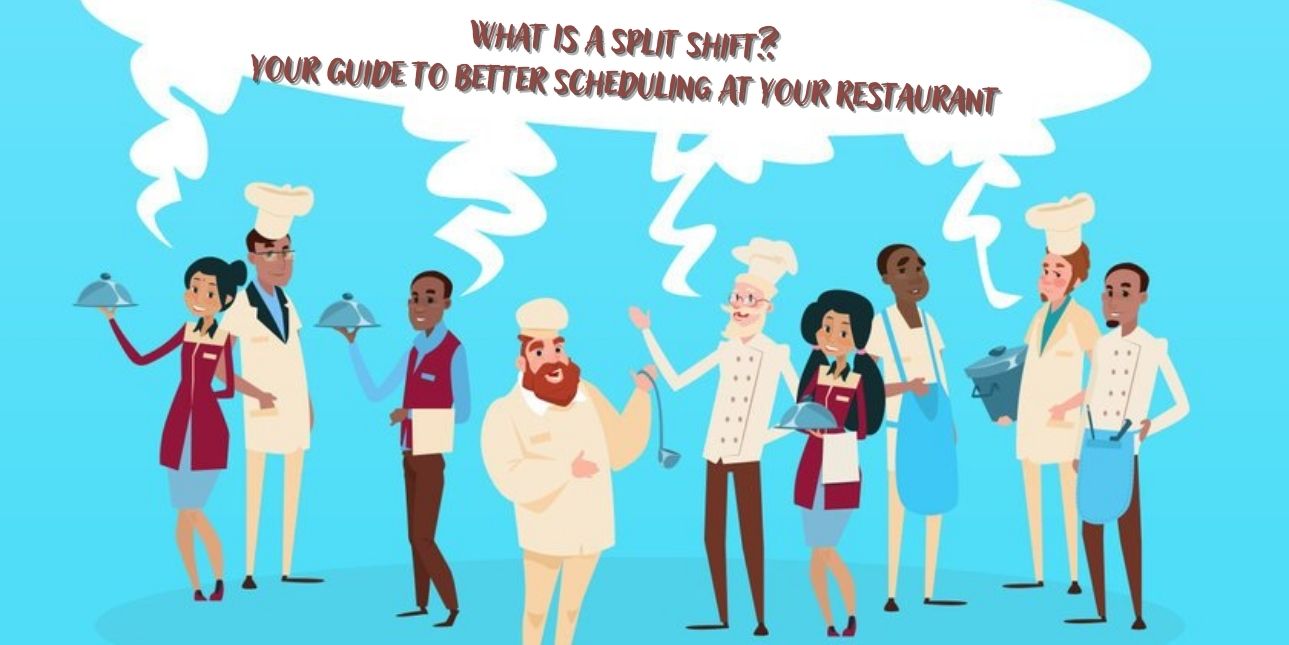
While most workplaces tend to work in shifts that are between 7 and 9 hours long at a stretch, it makes little sense for food service employees to be at work when things are slow, and when there’s little work to do. Continuous shifts are not well suited for the hospitality industry since customers tend to come in during specific times of the day. Split shifts, on the other hand, help restaurateurs and workers plan their day so they can be at the workplace right when their services are needed the most.
A split shift brings flexibility to your workers’ schedules and also makes more financial and operational sense for business owners. The model is a known method for keeping burnout at bay, and improving productivity - since the break between shifts enables employees to take a break and come back rejuvenated. Read on as we discuss the split shift system and its advantages, disadvantages, and what you need to know about the system before you implement it at your restaurant.
What Is A Split Shift Schedule?
Split shifts are work hours on a regular workday that are split into different parts with a long and often unpaid break between them. While the total work hours for the day are still the same when compared to a regular shift, the break in between allows you to utilize your employees’ time better and only when their assistance is really needed at the restaurant. The break is at least two hours long and allows employees to attend to either other important activities in their lives, or to catch up on some much-needed rest so they come back fresh, and more productive following the break. An example to illustrate the split shift system would be a waitress that works an 8-hour shift, albeit in two separate time frames. First from 9 AM to 1 PM, and then between 4 PM and 8 PM, with a 3-hour break between them.
What Are The Benefits of Split Shifts?
Replacing your current restaurant shifts with split shift hours has a variety of benefits. Working split shifts can help you and your employees with:
- Better Labor Utilization: Split shifts allow your employees to work when there’s a necessity for their presence and when there are customers at your establishment. It also helps you save costs by planning the number of employees required during both peak and slow hours. Some establishments work purely in split shifts, this also helps you save operational costs.
- Avoid Stress & Burnout: Working continuous shifts can put serious stress on your employees, and this is especially true for the hospitality industry. When you incorporate a long break between shifts, you allow your employees to sit back and relax for some time before they can get back to work for the rest of the day.
- Flexibility: Split shifts allow you to create a balanced workplace. It has become increasingly important to establish a work-life balance, and a split shift can enable your employees to complete important chores, and other essential tasks during their break time.
- Increased Productivity: The longer hours employees work, the less productive they are. Split shifts allow your employees to get some much-needed rest before they can get back to work again, allowing them to be more productive and efficient at the work they do.
- Impacts Customer Experience: Restaurants require sufficient staff to deal with customers and to make their experience memorable. A deserted-looking restaurant during rush hour will impact your reputation poorly, and will not help you deliver on customer experience. Split shifts can help you avoid being understaffed and ensure you provide the best service to all of your customers.
What Are The Disadvantages of Split Shifts?
While there are several benefits to the split shift schedule, there also are a few drawbacks to consider before you implement the system. Some of them are:
- Increase In Commute Times & Expenses: Split shifts might cause your staff’s commute times to increase, along with this, they might also lead to increased expenses for your employees. This becomes especially cumbersome for those workers that use public transportation.
- Inconvenience: Split shifts might be inconvenient for employees that live far away from the restaurant, and traveling to and fro for two shifts might make little sense for such workers.
Scheduling Split Shift Hours
Proper scheduling is essential for split shifts to work. Get in touch with your manager to help with the scheduling process at your establishment. Scheduling the split shifts is integral to smooth and efficient operations throughout the day. Take into consideration logistics, finances, and inform the employees about their split shifts before you institute a detailed schedule and plan. A well-planned split shift schedule can help you keep your employees productive, well-rested, and also ensure your customers are satisfied.
Regulations & Legalities
It’s important to consult with legal experts and advisors before you begin instituting split shift hours at your foodservice establishment. Make sure you’re well-versed with the Federal Fair Labor Standards Act before you go about instituting a split-shift system at your establishment. States like New York and California have laws that require employers to pay their employees working split shifts a premium. The premium is usually an extra hour’s pay at minimum wage for the days the employees work split shifts. This is also applicable to shifts that are spread over a 10-hour period. It’s important to note that the state of California allows employers to waive the split shift premium in case the employee working a split shift earns more than the minimum wage. Other states such as Illinois and The District of Columbia also have certain legislations that pertain to split shifts. You should also factor in the laws that govern your workers’ unions, provided they’re part of one before you go about allowing your employees to work split shifts.
Split shifts offer an opportunity for restaurateurs to maximize efficiency, labor utilization, productivity, and also keep your establishment profitable throughout the slow periods. These shifts offer flexibility to employees and improve their standards of work-life balance, an important aspect of employee expectations in the current decade. The costs you save by implementing split shifts can also help you equip your establishment better, since foodservice establishments require high-end equipment such as commercial refrigerators to function. Deploy the requisite technology, consider the factors such as employees’ commute, their preferences, and also your establishment’s sales patterns before you go about putting in place a split shift system at your commercial kitchen business.








